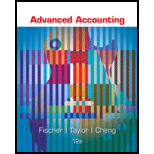
Equity method: The equity method basically keeps the record of the parent’s ownership interest that is multiplied by the reported net income of the subsidiary. This income will be added to parent’s investment account and the deduction in this method will be of the parent’s ownership interest multiplied by the reported losses of the subsidiary and parent’s ownership interest multiplied by the declared dividends of the subsidiary. All together equals the equity-adjusted balance.
Cost method: The cost method basically retains the original cost of acquisition balance in the subsidiary account. As the income is earned by the subsidiary, no adjustments would be made.
To calculate: The preparation of statement of determination and distribution of excess schedule for the year end December
Want to see the full answer?
Check out a sample textbook solution
Chapter 3 Solutions
Advanced Accounting
 Intermediate Accounting: Reporting And AnalysisAccountingISBN:9781337788281Author:James M. Wahlen, Jefferson P. Jones, Donald PagachPublisher:Cengage Learning
Intermediate Accounting: Reporting And AnalysisAccountingISBN:9781337788281Author:James M. Wahlen, Jefferson P. Jones, Donald PagachPublisher:Cengage Learning Financial AccountingAccountingISBN:9781305088436Author:Carl Warren, Jim Reeve, Jonathan DuchacPublisher:Cengage Learning
Financial AccountingAccountingISBN:9781305088436Author:Carl Warren, Jim Reeve, Jonathan DuchacPublisher:Cengage Learning


